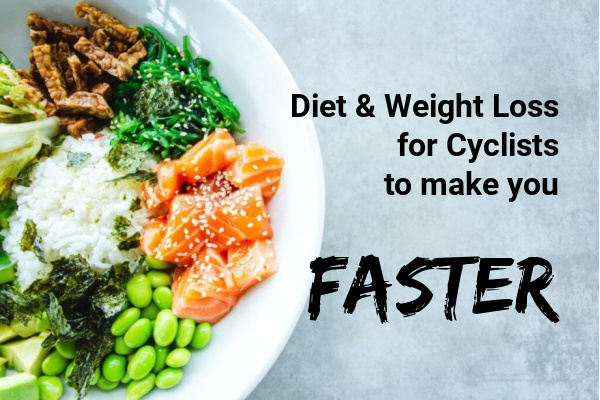
Diet And Weight Loss To Make You Faster
Nutrition and food choices are a key component of weight loss for all endurance athletes, including cyclists. When done correctly, weight loss can have a huge
In recent years the new buzzword in endurance sports has been “Zone 2” training. There’s no doubt that the bulk of an off-season periodized training schedule should include a heavy dose of zone 2 as we know training at this intensity has several benefits.
One of the most important reasons to train at this lower intensity is the increase in mitochondrial density that occurs in your Type I muscle fibers. The higher your mitochondrial density, the better you can utilize the lactate that’s produced in your anaerobic efforts to create energy.
During these hard anaerobic efforts, the type II muscle fibers, or “fast twitch” fibers, convert glycogen stored in your muscles into lactate and send it to the Type I muscle fibers, or “slow twitch” fibers. In the Type I muscle fibers, the lactate is converted to pyruvate which is used in the mitochondria to produce the energy molecule ATP. With higher quantities of mitochondria in these Type I muscle fibers, more lactate clearance can occur, where it can be converted to energy. This increased efficiency in clearing lactate to where it can be utilized for energy occurs much more effectively if you have a higher mitochondrial density.
A good example of this effective system being maximized is when a crit rider can repeat hard intense efforts during surges, attacks, and accelerations out of corners and repeat these efforts for the duration of their race. They have developed a greater fatigue resistance by training at these lower intensities to develop a higher mitochondrial density.
Another reason to spend the majority of your off-season training in zone 2, is to train your fat-burning capacity. During lower zone 2 intensities, fat is utilized, and you become very efficient at
using fat as a fuel source. This is extremely important in long endurance events.
In a typical periodized off-season training program, the bulk of your training should be done in zone 2, but this does not mean that zone 2 is all you should do this time of year. Depending on your training history, it is imperative to include higher-intensity efforts in approximately 20% of your training days per week. A common balance is to do 80% zone 2 and 20% in higher intensities such as sweet-spot, threshold, or VO2 intensities.
When starting your training and preparation for next season, it’s not uncommon to begin with only zone 2 rides, but the higher intensity efforts should be included in your program soon and often starting with only one high-intensity day a week. Another interval day can be added when you get further into your training program. This will develop your ability to generate a higher power output and tolerate higher intensities.
A blend of zone 2 and one to two higher-intensity days per week is a very effective way to approach your off-season training. This goes for those riders who are “time-crunched” as well. There are some who believe that “time-crunched” athletes should only do high-intensity training since they don’t have as much time to train as pro riders do. The fact is, physiologically, this doesn’t make sense. Zone 2 should be the bulk of your training in the off-season so the aerobic system can be trained to develop the lactate-clearing ability that is necessary to perform during the racing season. The increased mitochondrial density will give you the ability to repeat the intense efforts throughout your race by better, more efficient lactate clearance. The higher-intensity efforts performed during the off-season will transition to more race-specific efforts closer to your event to have you ready on race day!
For more information on specific training programs or VeloCoach coaching services, visit our website at www.velocoachelite.com. Let’s make you faster!
by Vint Schoenfeldt. Learn More about the Author Here

Nutrition and food choices are a key component of weight loss for all endurance athletes, including cyclists. When done correctly, weight loss can have a huge

Photos are rolling from Mt. Blue Sky/Bob Cook Memorial Hill Climb p/b Team Evergreen on that was held this past weekend. The day lived up

Pad Thai is a popular street food in Thailand, which is whipped up quickly and packed full of flavor. It’s one of our favorite post-ride

Tubless Tires: Myth or Magic? Justin Bolinger of I Know a Guy Bicycles “UNBOXES” the Truth about this setup (Should you go Tubeless?) Recent Posts

Last week, Douglas County hosted the Natural Grocers Criterium at their sheriff’s training facility, and the camera of Ryan Muncy/Ryan Muncy Photography was on the scene

When you are looking to refuel at lunchtime, go for carbs and quality protein – this pasta dish is ideal. Cycling takes energy, and energy come